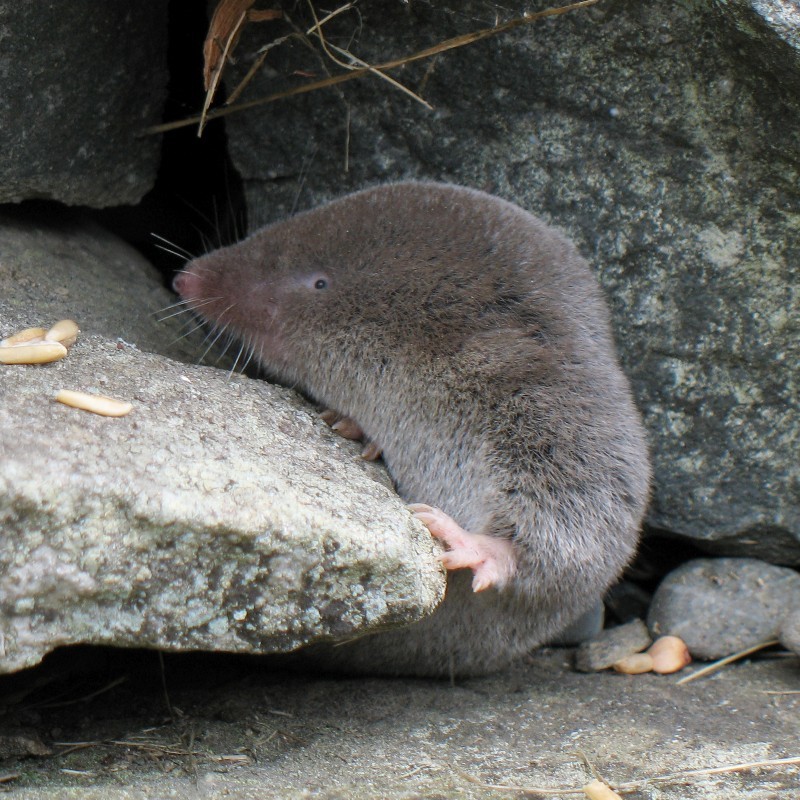Northern short-tailed shrew
A species of American short-tailed shrews, Also known as Nantucket short-tailed shrew Scientific name : Blarina brevicauda Genus : American short-tailed shrews
Northern short-tailed shrew, A species of American short-tailed shrews
Also known as:
Nantucket short-tailed shrew
Scientific name: Blarina brevicauda
Genus: American short-tailed shrews
Content
Description General Info
 Photo By Gilles Gonthier , used under CC-BY-2.0 /Cropped and compressed from original
Photo By Gilles Gonthier , used under CC-BY-2.0 /Cropped and compressed from original Description
This shrew has a total length of 108 to 140 mm (4.3 to 5.5 in), of which 18 to 32 mm (0.71 to 1.26 in) is tail; and weighs 15 to 30 g (0.53 to 1.06 oz). The species exhibits slight sexual dimorphism in size, with the male being slightly larger than the female. The dorsal fur is thick and velvety, and can be black, brownish black, or silvery gray, with the ventral fur being a bit lighter and grayer. The shrew molts from a summer coat which is shorter and paler than the winter pelage in October and November, and back again sometime in February through July. The tail is quite short, amounting to less than 25% of the total length. The dental formula is I 3-3/1-1, C 1-1/1-1, P 3-3/1-1, M 3-3/3-3 = 16/16 = 32. Three well-developed scent glands are present, one on each side of the animal and one placed ventrally; the scent may be used for marking territories, though the shrew's sense of smell is thought to be poor. 
General Info
Lifespan
1-3 years
Diet
Northern short-tailed shrew is primarily insectivorous, with insects constituting the bulk of its diet. It has a proclivity for earthworms, slugs, and various species of beetles. Additionally, it exhibits carnivorous tendencies, consuming small mammals and amphibians.
Appearance
The northern short-tailed shrew is a small, stout mammal, usually measuring around 13-19 cm in length. Its dense, velvety fur is uniformly slate-colored, darkening towards the tail. The northern short-tailed shrew has an elongated head with a sharply pointed snout. Its robust tail is shorter than its body, and the rear legs bear a distinct projection used for grooming. No significant differences in size or coloration exist among genders or age classes.
Behavior
Northern short-tailed shrew is an insectivorous, nocturnal mammal, emerging at night to actively forage for food using its echolocation ability. This solitary species has a highly territorial nature, fiercely defending its zone against intrusions. Additionally, northern short-tailed shrew demonstrates unique survival traits, including partial hibernation during winter and employing a venomous bite against predators.
Population
Stable